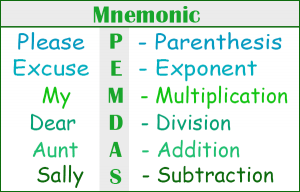What Are The Top Three Strategies To Use When Engaging Students?
No matter how teachers communicate with students, there are always fun methods to keep them engaged. Whenever there are hand gestures, body movement, and eye-contact I know the fun is about to begin. I enjoy working with students and when I use Whole Brain teaching techniques, Total physical Response gestures, and Mnemonic Devices to stimulate memory; everybody wins. All three practices keep students involved and create visuals aids to help students retain new information.
Whole Brain and African Traditions
Whole Brain Teaching reminds me of an ancestral tradition; call and response. There’s a rich history in African oral traditions, children were verbally taught. In a call and response method, the teacher- in a musical phrase would make a statement, which is often responded by a second choral ensemble part in unison- in response to the teacher. You can find examples of this in the Black church and in classrooms around the world. Many teachers have perfected this technique. They combine sound, song, and patterns while including students in call and response to the melody of a current trending song. Students know the melody and the rhythm of the trendy song and get excited when its used in the classroom.
What is Whole Brain Teaching?
Chris Biffle defines it as, “a teaching technique that uses the whole brain to engage students in learning.” Below are some of the basic rules and strategies of whole brain teaching.” Many schools adopt these strategies at the beginning of the school year to explain classroom rules. Whole Brain helps teachers chunk content into bit size pieces making lessons more digestible. The science behind it helps to activate involvement and keep students’ attention.
What are the Seven Strategies?
Class- Yes: Teacher gets students attention by saying class- students respond by saying yes in the same way modeling the intonation.
Five Classroom Rules: Teacher rehearses the rules using hand movements and small phrases. Students lean rules by mimicking the teachers’ movements.
Teach-Okay: Teacher speaks briefly- Students teach other students with hand gestures after listening to procedures or concepts
The Scoreboard: Teacher writes a scoreboard on a tables for rewards for friendly competition
Hands and Eyes: Teachers alert students on where they should focus using their eyes, ie. track the speaker. Hands folded or celebrating successful student working hard to eliminate distractions.
Switch: Once student A has explained a concept and Student B listens, teacher yells switch and student B explains a concept and student A listens
Mirror: When words and gestures are used to repeat words to engage others.
What is Total Physical Response
The TPR method or Total Physical Response refers to teaching language and vocabulary by using hand gestures and physical movement for students to react to verbal statements. This is a great method for students that are acquiring a new language. It reduces stress and it helps students link speech and action, to boost language. The Teacher Toolkit has great techniques on how to implement the strategies below:
Teacher Prepare: Select the vocabulary that you are going to teach. Gather any equipment, props or pictures you will need to illustrate the meaning of the words.
Teacher Modeling: Say the new vocabulary word for the students. As you do this, use gestures, facial expressions, props or body movement to illustrate the meaning of the word.
Student Modeling: Have student volunteers mimic the same gestures, facial expressions, use of props or body movement modeled as you say the word.
Student Participation: Have all students mimic the same gestures, facial expressions, use of props or body movement modeled by the teacher and student volunteers
Writing: Write the word or phrase where all students can see it so that students can make the connection between oral and written words.
Repetition and Practice: Teach the next word or phrase using the same method. Review and practice words with student’s multiple times to ensure learning.
What is a Mnemonic Device?
Mnemonic devices are techniques that help students improve their ability to remember something. Words,Acronyms, songs, and rhymes that train your brain to recall important information. A well-known mnemonic would be “Please Excuse My Dear Aunt Sally, which is the order of operation for math. Another one that helped my students remember the days in the calendar is listed belowThirty days hath September,April, June, and November;All the rest have thirty-one,Save February, with twenty-eight days clear,And twenty-nine each leap year.
Why are all three Important?
All three techniques; Whole Brain Teaching, Total Physical Response, and Mnemonic Devices are key to keeping students remain engaged. All three activate multiple senses and allows for a non-threatening play to occur and engage the learner. If you are interested in learning more, join my Professional development in which we role play, practice, and acquire these skills together. If you are in Indianapolis, feel free to join us for our Engagement practices in the classroom. We will be going over some of these techniques in depth and working on how we can keep students present in any lesson.
References:
Total Physical Response, teachers toolkit, http://www.theteachertoolkit.com/index.php/tool/total-physical-response-tpr
Memory and Mnemonic devices, https://psychcentral.com/lib/memory-and-mnemonic-devices/




